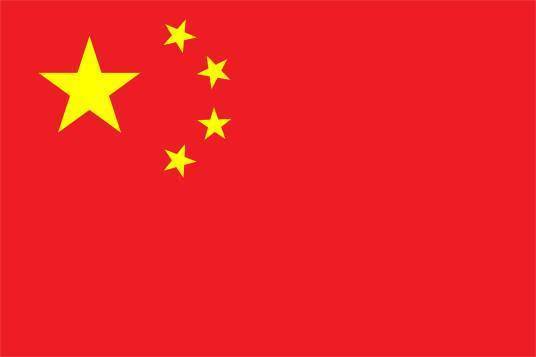Steady progress promotes high-quality development of the non-ferrous metals industry
Release time:
2022-02-15
On January 26, 2022, the first "Online Metal Week" of 2022 and the seminar on the futures market's contribution to the high-quality development of the non-ferrous metal industry, hosted by the Shanghai Futures Exchange, was successfully held. Non-ferrous metal industry professionals and futures industry experts reviewed and looked ahead at the performance of the non-ferrous metal market, conducted a detailed analysis of the nickel and tin markets, which have recently received much attention, and conducted in-depth discussions on measures for the futures market to serve the high-quality development of the non-ferrous metal industry.
The 2022 non-ferrous bull market may come to an end.
Reporters learned at the meeting that over the past two years, driven by ample liquidity, clean energy consumption, and supply-side contraction, the global basic metal market has generally shown a strong bull market trend. In terms of performance throughout 2021, the price-driving logic of the non-ferrous fundamentals has undergone a significant shift, from a supply and demand-driven upward push on prices in the first half of the year, to a gradual shift to a divergence in the second half of the year, with the supply side itself even caught in a deadlock between energy consumption constraints and price controls.
Wang Rong, chief researcher of non-ferrous and precious metals at Guotai Junan Futures, believes that this divergence may continue in 2022, but in a different way. This means that the non-ferrous metal market will fully enter a tug-of-war year in 2022, and under the large cycle of new and old energy conversion, the contradiction between the long-term trend and short-term rhythm of related non-ferrous metals will be more prominent.
From the supply and demand side, Wang Rong said that the supply of non-ferrous metals in 2022 will most likely increase, but the increase will not be large. The "increase" is because once the proportion of secondary industries returns to a downward trend, the certainty of a phased reduction in the pressure of domestic energy consumption control will be relatively large, and the constraints of the dual carbon policy on the supply side of non-ferrous metals will also be reduced accordingly; the "small increase" is because global mining and smelting companies are in a period of relatively low capital expenditure, and the high overseas electricity prices have driven up smelting costs, further affecting the willingness to invest. The pattern of the non-ferrous demand side will be more chaotic, showing a game between new and old consumption. The overall decline in traditional demand and the growth of clean energy consumption offset each other. For 2022, she expects traditional demand to decrease to some extent, but there is no need to be overly pessimistic, "new consumption" may provide a good offset. Overall, she predicts that the bull market for non-ferrous metals in 2022 will come to an end, shifting from a unilateral direction to an oscillating trend, and structural arbitrage and unilateral range opportunities can be focused on.
In the short term, she said that the current global market macroeconomic expectations are temporarily stable, the Federal Reserve's interest rate hike expectations are fully priced in, and China's macroeconomic expectations are constantly being repaired. However, it is necessary to note that the risks at the current juncture still exist, and the short-term contradictions in the non-ferrous metal market are concentrated in the inventory buildup during the Chinese Spring Festival, while the risk points are the situation in Ukraine, the LME nickel market squeeze, and policy disruptions in overseas main producing areas (Indonesia). Therefore, it can be seen that the high volatility of the nickel and tin markets has recently risen, and related industrial enterprises need to pay more attention to risk management under high market volatility.
Nickel's performance for the whole year may be strong then weak.
Looking back at the whole year of 2021, the nickel market showed strong supply and demand, especially the global recovery of primary nickel consumption exceeding expectations. Xu Aidong, chief expert at Antaike, said that on the one hand, battery nickel continues to exert its strength, with lithium iron phosphate and ternary lithium batteries running neck and neck. Data shows that in 2021, China's precursor production reached 590,000 tons, an increase of 85.7% year-on-year, and the output of ternary materials reached 400,000 tons, an increase of 83% year-on-year. It is expected that in 2022, the output of ternary precursors and materials will continue to grow by 30% to 40%. So overall, the raw materials for battery nickel are still in short supply. Despite the competition between ternary and lithium iron phosphate, the rapid growth of ternary lithium batteries should not be worried about because of the doubling growth of lithium iron phosphate. Lithium iron phosphate has made great contributions in seizing the primary market, but the need for consumption upgrades in the electric vehicle field cannot be ignored. On the other hand, the stainless steel industry still has room for growth, with China and Indonesia taking the lead. In China, in 2021, China's stainless steel production reached 32.44 million tons, an increase of 6.6% year-on-year. Driven by capacity growth and price declines, production is expected to increase by a further 4% in 2022 to 33.7 million tons; in Indonesia, in 2021, Indonesia's stainless steel production reached 5.03 million tons, a significant increase of 87% year-on-year, and all products are 300 series. It is expected that Indonesia's stainless steel production in 2022 will increase by 29.2% year-on-year to 6.5 million tons. Overall, she expects that from 2021 to 2025, the global stainless steel compound annual growth rate needs to be maintained at 4.5%, with 5.6% for China and 12.3% for Indonesia.
From the supply side, nickel pig iron is leading the growth of global primary nickel, but the growth of traditional nickel companies is weak. Data shows that in 2021, global primary nickel production reached 2.68 million tons, an increase of 7.7% year-on-year, with the increase mainly coming from nickel pig iron in Indonesia. She said that 2022 will enter a peak production period, and production is expected to increase by 17.4% year-on-year to 3.15 million tons, with the increase mainly coming from nickel pig iron in Indonesia and nickel salts in China. However, it can be seen that the global Class 1 nickel production decreased year-on-year in 2021, and major producers such as Vale, Norilsk Nickel, and Glencore experienced unplanned production reductions, and the overall performance of traditional nickel producers was poor.
Specifically, she expects China's primary nickel production to rebound to 781,000 tons in 2022, and with the continuous transfer of China's nickel industry, Indonesia will become the world's largest nickel producer. It can be seen that almost all new nickel investments in the past decade have flowed into Indonesia. In 2021, Indonesia's primary nickel production is expected to reach 920,000 tons, with China's capital, technology, and market helping to make Indonesia the world's largest nickel producer. She expects that in 2022, Indonesia's hydrometallurgical and pyrometallurgical projects will see a concentrated release of new capacity, with nearly 500,000 tons of capacity to be put into production, and Indonesia is expected to become the main source of battery-grade nickel globally.
Overall, Xu Aidong believes that the structural shortage of nickel remains, and the price is expected to rise and then fall throughout the year. Although the supply-demand balance sheet for the whole year shows that the nickel market will shift to surplus in 2022, the structural shortage still exists, and inventories in the two markets continue to hover at low levels. At the same time, the global energy supply remains tight in 2022, with electricity and natural gas prices remaining high, and nickel supply growth outside Indonesia is being suppressed, and the investment in clean energy and the pressure of carbon neutrality may increase nickel production costs. Although the market is worried that the low-cost nickel pig iron and hydrometallurgical projects in Indonesia will lower the overall industry cost center, the main task at present is to meet the growth in demand, and China's nickel iron supply has become the marginal support for the high cost of the global market. In terms of price performance, she expects that nickel prices will rise first and then fall in 2022, with the LME March nickel price ranging from $15,000 to $25,000 per ton, and the market still needs to closely monitor adjustments to Indonesian mining policies.
The tin market maintains a state of supply shortage.
Affected by supply disruptions and low inventories, tin prices soared by more than 90% throughout 2021, topping the basic metals. In January 2022, the Shanghai tin price continued to hit record highs during a sustained surge, and the risk of high volatility continued to increase. Xia Xiaodong, senior analyst at the International Tin Association, said that the surge in tin prices was mainly due to the impact of the market's structural transformation, and the tin market has entered an era of structural shortage, with inventories in the two markets continuing to hover at low levels.
According to Xiaodong Xia, due to the concentrated supply and dispersed consumption pattern of the global tin market, the impact of supply disruptions on the market structure is very prominent. In the past two years, under the influence of the COVID-19 pandemic, tin market supply disruptions have continued, especially in major overseas producing areas such as Indonesia, Malaysia, and Myanmar, where tin production has declined due to local policies and the COVID-19 pandemic. Domestically, the shortage of supply has been further exacerbated by factors such as energy consumption control and the shutdown and maintenance of Yunnan Tin. Since January this year, the market's replenishment demand has been strong, pushing tin prices up further.
Regarding the current market situation, he said that with the approach of the domestic Spring Festival holiday, domestic traders and downstream tin-using enterprises have begun to take holidays one after another. Most smelters in Yunnan will continue production during the Spring Festival, but some smelters in Jiangxi, Anhui, and Guangxi have plans to reduce production during the holiday, with an estimated production reduction of about 2,000 tons. However, considering the downstream situation, the overall impact on the market is not significant.
Looking at the overseas market, recently, affected by the delay in Indonesian tin export licenses, both domestic and international tin prices hit record highs in the week of January 24. According to him, Indonesia is the largest tin exporter, with tin exports exceeding 70,000 tons in 2021. The annual government license confirmation is mainly to prevent tin exports from illegal mines, especially for private enterprises, the possibility of delays in tin export licenses is higher. Currently, Indonesia's state-owned enterprise PT Timah has obtained the license and will export tin at the end of this month as scheduled, but private enterprises have not yet obtained export licenses.
In the long term, the International Tin Association expects the global tin market to be in a state of supply shortage in the next 3-5 years, mainly due to significant consumption highlights on the consumption side, especially in the photovoltaic field. According to the International Tin Association's model estimation, the amount of tin used in the photovoltaic industry in 2021 will exceed 14,000 tons, a year-on-year increase of about 40%; in 2022, the amount of tin used in the photovoltaic industry is expected to reach 16,000-19,000 tons; before 2025, the amount of tin used in the photovoltaic industry will continue to increase at an average annual growth rate of 25%-40%, growing into a tin consumption market with an annual consumption of tens of thousands of tons. In addition, the development of 5G communication and new energy vehicles will continue to drive the growth of tin demand.
Futures services need to keep pace with the development of the spot market
In the meeting discussion session, the participants believed that to serve the high-quality development of the non-ferrous metal industry chain, the futures market needs to keep pace with the transformation and development of the industry chain, and timely launch new varieties and tools that meet market demand. At the same time, they called for further expansion of non-ferrous metal delivery products, enriching the variety layout of the non-ferrous metal industry chain, and serving the transformation and high-quality development of the non-ferrous metal industry.
“The recent high volatility of nickel prices has put some pressure on the stable operation of industrial enterprises, and the importance of the risk management function of futures tools has become more prominent.” According to Xuedong Xu, this requires all parties in the industry to closely monitor price fluctuations, actively solve problems, and clear channels, giving full play to the functions of the futures market in price discovery and hedging to serve the real economy. In terms of specific measures, she suggested: first, increase the number of deliverable brands of nickel contracts and formulate delivery rules for nickel beans as soon as possible to enable futures prices to more comprehensively reflect the demand of the spot market; second, study the possibility of adding new trading targets. She said that currently, futures pricing is mainly based on electrolytic nickel, but the proportion of electrolytic nickel in the spot market has been declining year by year, and the mainstream consumption is concentrated in nickel pig iron and nickel sulfate. Therefore, it is necessary to study related varieties.
In terms of aluminum varieties, Li Xun, general manager of the Shanghai Steel Union Aluminum Business Department, said that the current aluminum market mainly uses electrolytic aluminum as the pricing benchmark. However, with the introduction of the "dual carbon" goal and the continuous "going global" of Chinese enterprises, the price fluctuations of alumina and aluminum alloys are also gradually increasing. Currently, alumina spot prices are mainly determined by the "three networks," and there is a strong call in the market for the listing of alumina futures, hoping to use futures prices as a tool for spot pricing and settlement. Regarding aluminum alloy ADC12, in the past, it was mainly traded between factories, but since last year, it has also increasingly appeared in trade circulation. However, since 80% of its raw materials are waste aluminum, the price fluctuation of aluminum alloy ADC12 is basically decoupled from electrolytic aluminum. During the period of sharp price fluctuations in the fourth quarter of last year, the hedging needs of related production enterprises and downstream consumers were very prominent, and they all looked forward to the listing of related futures varieties.
Finally, the relevant person in charge of the Shanghai Futures Exchange stated that with the continuous changes and development of the spot market, new requirements have also been put forward for the functions of the futures market. The Shanghai Futures Exchange will strictly follow the requirements of the Central Economic Work Conference and the 2022 CSRC system work conference, adhering to the principle of stability first and seeking progress through stability. First, in terms of "stability," we must adhere to the principles of "establishing a system, not interfering, and zero tolerance," and adhere to the principles of "four respects and one synergy," putting stable growth and risk prevention in a prominent position, further increasing market monitoring efforts, resolutely maintaining market fairness, justice, and openness, and cracking down on various illegal and irregular behaviors; second, in terms of "progress," we will accelerate the promotion of market innovation business, actively respond to the actual needs of the real economy and industrial customers, and strive to achieve "quick changes for what can be changed and quick actions for what can be done." For example, we will accelerate the introduction of nickel beans and recycled lead into the delivery system, expanding deliverable resources; accelerate the preparation for the listing of alumina futures, vigorously promote the research and development of aluminum alloy futures programs, and better optimize the relevant rules of international copper futures to serve the high-quality development of the non-ferrous metal industry.
Steady progress promotes high-quality development of the non-ferrous metals industry
Summary: On January 26, the first "Online Metal Week" of 2022 and the seminar on futures markets assisting the high-quality development of the non-ferrous metals industry, hosted by the Shanghai Futures Exchange, were successfully held. Non-ferrous metal industry professionals and futures market experts reviewed and looked ahead at the performance of the non-ferrous metals market, and conducted detailed analyses of the nickel and tin markets, which have recently attracted much market attention. Both sides also engaged in in-depth discussions on measures for futures markets to serve the high-quality development of the non-ferrous metals industry.
2022-02-15
Summary: According to the Ministry of Industry and Information Technology, in 2021, the non-ferrous metals industry overcame the adverse effects of repeated epidemics, seized opportunities for recovery in both domestic and international markets, continued to deepen supply-side structural reforms, ensured the effective supply of industrial chains and supply chains, accelerated the intelligent, green, and high-end transformation of traditional industries, and maintained overall stable operation.
2022-02-15










